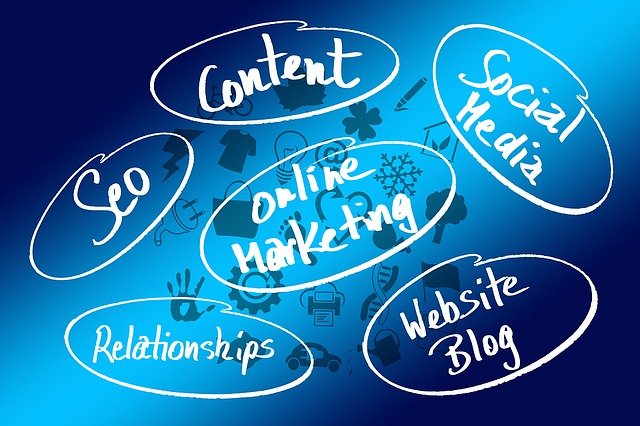College is an experience that always leaves a lasting impression. Whether you’re just graduating or are planning to go to college in the near future, choosing the right school can be a difficult process. Today, prospective students and their parents are turning to the web to research and evaluate their options.

With the profound changes that the internet has made in just about every industry, higher education marketing strategies would do well to consider using inbound marketing tactics.
Designed to reach potential candidates where they search online, inbound marketing increases the number of visitors to your website and helps you convert potential students into candidates.
Why do colleges and universities need inbound marketing?
With over 1,000+ colleges and universities worldwide, it can be difficult to make your institution stand out from the crowd.
Inbound marketing strategies position your school as an authoritative institution and help you communicate your unique selling proposition to potential students. Ultimately, this will help your establishment convert more qualified website visitors into candidates.

First, you’ll need to generate a target audience. Once you have one, go on and build your inbound marketing strategy around activities designed to resonate with its members.
For example, are you trying to reach high school juniors and seniors? All high school students? Their parents?
Setting clear goals from the start will ensure the success of your inbound marketing strategies and help you communicate effectively with your target audience.
Inbound Marketing Strategies for Higher Education
Let’s look at some common inbound marketing strategies used by higher education institutions.
Search Engine Optimization (SEO)
A search engine is a program that searches for specific web addresses on the internet and displays them (usually in the order of relevance to the query entered) based on preset criteria, such as keywords, cost-per-click bids, etc.

Not only is SEO more targeted than traditional marketing strategies, but it also has a higher return on investment (ROI).
Pay-Per-Click (PPC) Advertising
Pay-per-click (PPC) advertising helps businesses gain exposure in search engines while building organic rankings with SEO.
With PPC, you can select the keywords and phrases you want your ad to show for, and if your bid is the highest, your ad will show up at the top of search results.
One of the main advantages of PPC is that the results are instantaneous. When you click on an ad to put it online, it goes online. By using PPC ads, you can instantly send traffic to your website and increase the number of qualified leads.
Social Media
Since the majority of your target market is active on social media, platforms like Facebook, Twitter, and Instagram are great ways to engage potential candidates.
Social media also connects prospective students with the answers they need. More and more students are using social media to ask questions and share feedback, which makes social media marketing effective for educational institutions.

Colleges can capitalize on this trend and use social media sites to answer questions and listen to the opinions of applicants and current students.
Schools should maintain a responsive and helpful presence on social media because it could attract more people to the school who will be more than happy to study when they have such a committed university.
Content Marketing
With the volume of content potential applicants receive from colleges and universities, it’s important that your institution stands out.
For higher education institutions, content marketing is about telling a story. Your content marketing should communicate to your target audience a unique selling proposition.
In other words, use your content strategy to highlight what makes your institution unique and why students should choose your school.
Does your school have any particular traditions? Do you offer attractive study abroad opportunities? Have you just opened a state-of-the-art sports facility? Tell your story to potential students and highlight what makes your school a great option.

Your content should also provide value to anyone interested in your high school program. Whether you’re creating a tweet, YouTube video, or blog post, think about how you can say something helpful that will give readers peace of mind or some advice.
This will make a big impression on potential students and help them feel confident in their decision to attend your school.
Final Thoughts
Inbound marketing allows colleges and universities to reach current and prospective students directly.
Additionally, inbound marketing allows you to connect with your target audience where they are already searching online.
Unlike outbound marketing strategies which often interrupt potential candidates, inbound marketing strategies are usually sought out by potential students. Inbound marketing allows you to engage with potential students online and build relationships that convert qualified site visitors into candidates.
As the demand for higher education continues to grow, you need to make sure your institution stands out from the competition.
Start using inbound marketing strategies today to reach more applicants online, increase enrolment, and generate more revenue for your school.

![Higher Education Marketing 2023 and Beyond [Detailed Analysis], Higher Education Marketing, Education Marketing, Education PR, Digital PR, Public Relations, Digital Marketing, social media, SEO for Higher Education, Digital Marketing for Higher Education](https://firdoshkhan.in/wp-content/uploads/2022/11/Higher-Education-Marketing-Strategies-300x200.jpg)

Pingback: Why You Need a Higher Education Inbound Marketing Strategy?
Pingback: What is Higher Education Marketing?